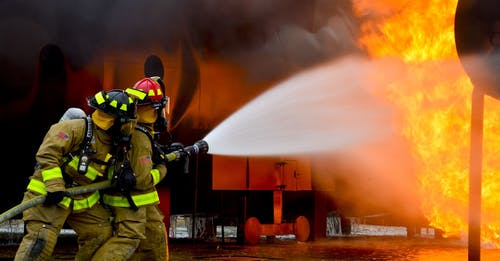Molds are fungi that you can find both indoors and outdoors. Mold grows and thrives best in warm, damp, and humid conditions and can spread quickly through a home or building. After a fire, your home or building is likely to have some of these conditions. In some cases, you may need professional fire damage services to help you with the cleanup.
Tips on Things to Do to Prevent Mold after a Fire
The following are some measures you can take to help prevent mold growth in your home or building after a fire:
- Ventilate the affected area. If the weather permits, open your doors and windows to allow fresh air to circulate. Use fans to circulate the air if needed.
- Remove wet items from the affected area as soon as possible. These items can include carpets, furniture, bedding, and clothing.
- Clean and dry the affected area thoroughly. Use a clean, dry cloth to wipe down walls, floors, and surfaces. You may need to use a mild detergent or disinfectant on some surfaces.
- Monitor the humidity levels in the affected area. Keep the humidity level below 50%. You can do this by using a dehumidifier, an air conditioner, or by opening doors and windows.
- Keep the affected areas as clean as possible. Regular cleaning will help prevent mold growth.
Signs of Mold in Your Home
The following are signs that your home may be infested with molds after a fire:
- Discolored or darkened walls, floors, or ceilings
- A musty or earthy smell
- Visible mold growth on surfaces
If you notice these signs in your home after a fire, it is important to take action immediately. Hire a property restoration company, if necessary, such as PuroClean of Montgomery, to clean up the mold and restore your home to its original condition.
How to Look for Reputable Property Damage Restoration?
You might need to hire a professional property damage restoration company if the damage is severe. If you have no idea where to find one, here are some tips:
- Start by asking for referrals from your insurance company, family, and friends. Insurance companies usually have a list of preferred service providers.
- If possible, hire professionals within your community because they are likely to be familiar with your area’s building codes and regulations. Also, you don’t want to wait for an out-of-town company to arrive when you need immediate assistance. Visit here if you are nearby Montgomery, AL.
- Research each company thoroughly before making a decision. Check their website, read customer reviews, and call them to ask questions. You may also want to check ratings from reliable sources such as the Better Business Bureau (BBB) or Google.
- Make sure that the company is experienced in handling fire damage restoration. This is a specialized field, so you want to make sure that the company you hire is qualified to do the job.
- Get everything in writing before work begins. This includes the cost of the project, the timeline, and the scope of work. This will help avoid any misunderstandings down the road.
- Ensure that the company you hire is licensed, insured, and certified by a professional organization like the IICRC (Institute of Inspection, Cleaning, and Restoration Certification).
- Get quotes from several different companies before making a decision.
Final Thoughts
If a fire has damaged your home or building, you should immediately take action to prevent mold growth. Follow the tips above to help prevent mold in your home after a fire. If you need assistance, hire a professional property damage restoration company.
